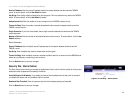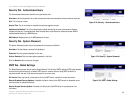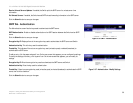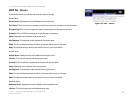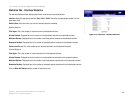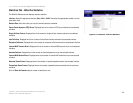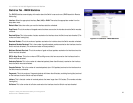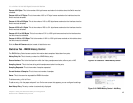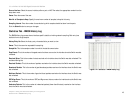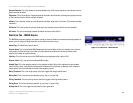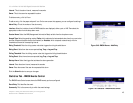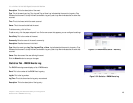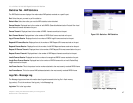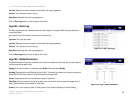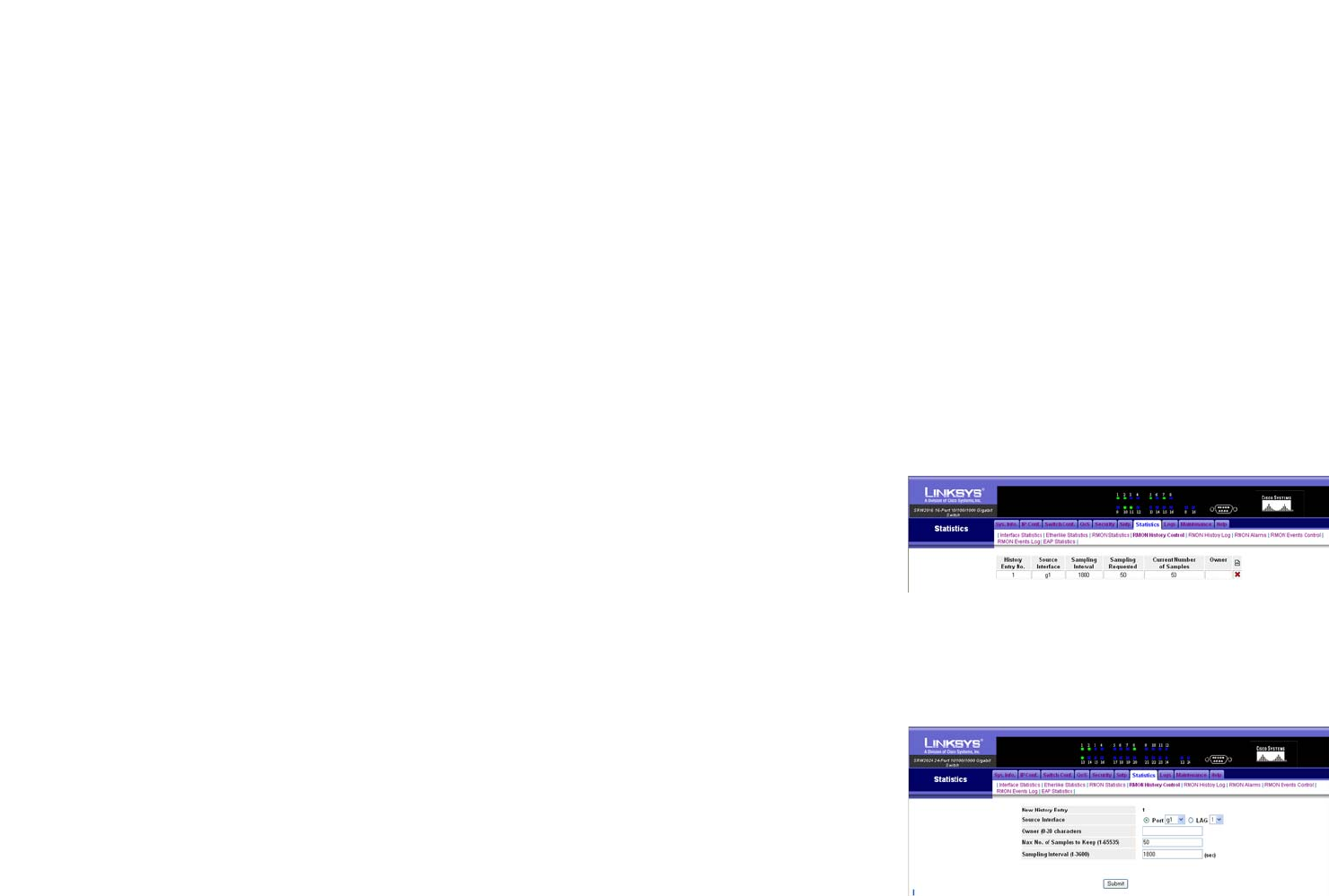
42
Chapter 5: Using the Web-based Utility for Configuration
Statistics Tab - RMON History Control
16- or 24-Port 10/100/1000 Gigabit Switch with WebView
Frames of 64 Bytes. This is the number of 64-byte frames received on the interface since the Switch was last
refreshed.
Frames of 65 to 127 Bytes. This is the number of 65- to 127-byte frames received on the interface since the
Switch was last refreshed.
Frames of 128 to 255 Bytes. This is the number of 128- to 255-byte frames received on the interface since the
Switch was last refreshed.
Frames of 256 to 511 Bytes. This is the number of 256- to 511-byte frames received on the interface since the
Switch was last refreshed.
Frames of 512 to 1023 Bytes. This is the number of 512- to 1023-byte frames received on the interface since
the Switch was last refreshed.
Frames of 1024 to 1518 Bytes. This is the number of 1024- to 1518-byte frames received on the interface since
the Switch was last refreshed.
Click the Clear All Counters button to reset all statistics to zero.
Statistics Tab - RMON History Control
The RMON History Control screen contains information about samples of data taken from ports.
History Entry No. This is the entry number for a RMON History entry.
Source Interface. This is the interface from which the history samples were taken, either a port or LAG.
Sampling Interval. This is the time during which samples were taken from the ports.
Sampling Requested. This is the number of samples requested.
Current Number of Samples. This is the current number of samples.
Owner. This is the user who requested the RMON information.
To delete an entry, click its X icon.
To add an entry, click the paper and pencil icon. On the new screen that appears, you can configure its settings.
New History Entry. The entry number is automatically displayed.
Figure 5-45: Statistics - RMON History Control
Figure 5-46: RMON History Control - Add Entry



